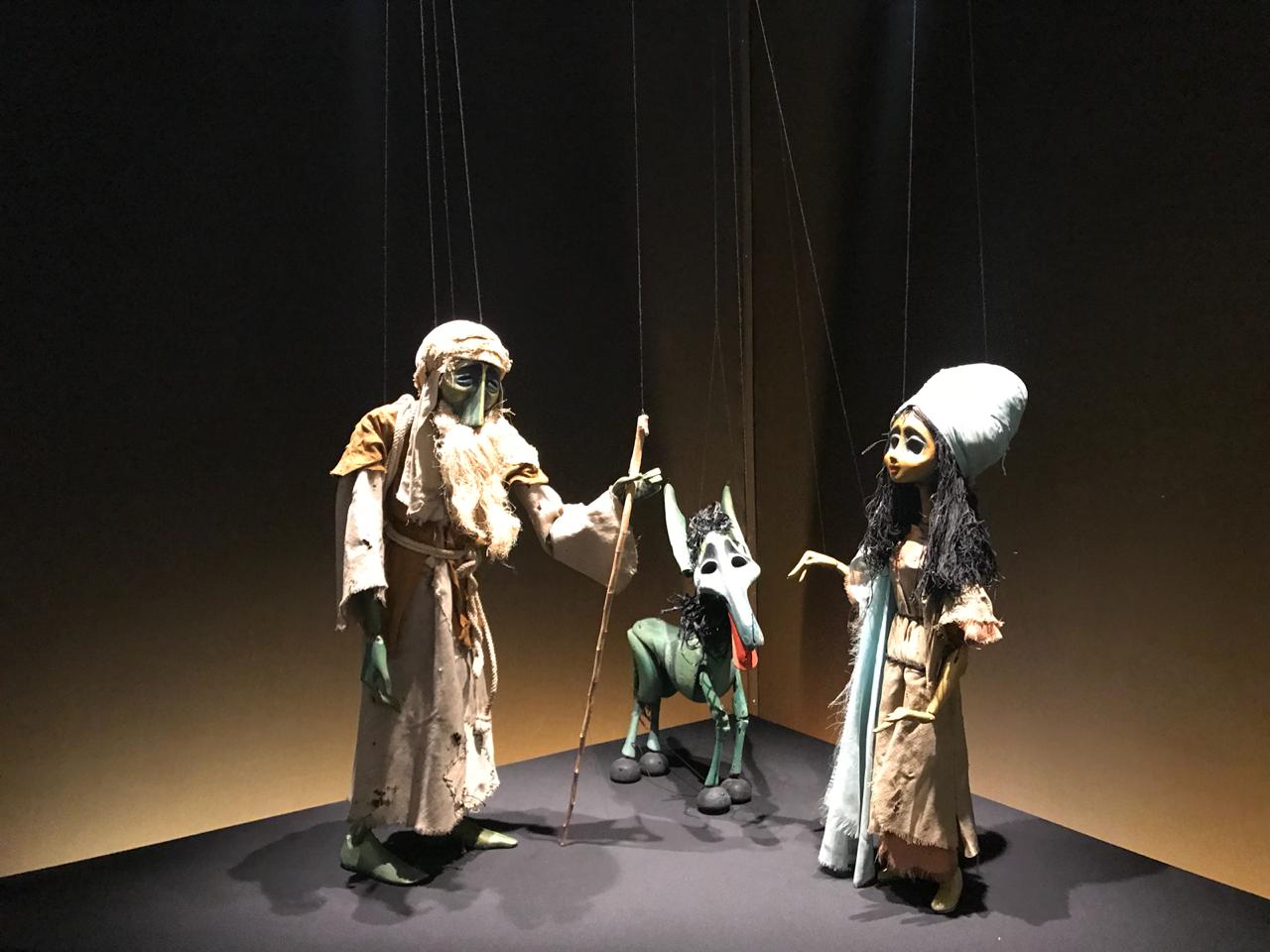By: Aya Aboshady
@Aya_Abuchadiee
As part of AUC’s Centennial celebrations, the Graphic Design Department held an exhibit titled The Experimentalist to honor the late Professor Nagy Shaker an Egyptian artist and designer who experimented with multiple art forms such as visual theatre, cinema, set and lighting, costume, graphic, interior, architectural and even marionette design.
Shaker, who died in 2018 at the age of 86, earned famed as the chief designer for the puppet show, Al-Leila Al-Kebira (The Big Night, 1960), a popular Egyptian Operetta by iconic poet Salah Jahin. Al-Leila Al-Kebira’s music was composed by singer and composer Sayed Mekkawi.
Shaker’s first show was theatrical production Al Shater Hassan (The Exceptional Hassan, 1959) and he was also the technical supervisor on the set of the 1979 romantic film Shafiqa w Metwali (Shafiqa and Metwali) for which he also designed the sets and costumes.
The exhibit formally opened at the Sharjah Art Gallery on February 17.
“Actually, this exhibition has been in the works for over a year now. I was working closely on the concept with Professor Shaker himself,” said Haytham Nawar, assistant professor in the Graphic Design Department.
Nawar is the curator and the mastermind behind the exhibition; he suggested it to the late artist. That’s when both of them joined forces until Shaker unfortunately passed away.
“Shaker was an interdisciplinary artist, designer and scholar but most people in Egypt know him for the puppets. We wanted to exhibit him as a designer for the first time ever,” Nawar added.
He explained that the exhibition features and combines all of Shaker’s work and, most importantly, sheds light on the trajectories of his life as a designer.
“It’s a whole experience, a concept of art in the making, not just as a final product. For example you see a poster, a flyer and then you see the film itself. You see sketches, more refined drawings and then you see the photographs and the final feature,” said Nawar.
Nawar went on to emphasize how Shaker used different mediums in the different fields he worked in, adding that this exhibition is more than just putting those artworks together.
“Shaker always wanted to have the spirit of somebody with a hobby in order to still have the same enthuthiasm to do it. He was a creator who refused to classify things and always considered himself someone who keeps experimenting. That’s actually how we came up with the name of the exhibition, The Experimentalist,” Nawar shared.
Nawar expressed his gratitude to Vera, Shaker’s wife, as well as Omneya Yehia, professor of Fine Arts, at Helwan university, the Zamalek campus; who spent almost 26 years with the late Shaker, first as a student and then as an assistant who kept him company until his final days.
He added that he searched for these objects and drawings in different institutions.
“The puppets, for example, came from the National Theatre of Puppets in Egypt, some of the sketches and drawings came from different collectors, some other works came from his collection at the Fine Arts University and of course some were with his wife as well as Professor Omneya,” Nawar added.
“Nagy Shaker’s personality was so rich; full of love and humility, you can see that the moment you talk to him and even through his art. He was a walking encyclopedia and not just in one field,” said Nawar.
Yehia, who came in support of the exhibition and to see it come to life, talked about how emotional this made her feel. She expressed how honored she is for having been able to spend this much time with Shaker and to have learned from him.
“This is the first exhibition without him and as much as it brings so many tears, we’re so happy because it is certainly honoring him. It’s very beautiful and turned out better than expected. He would really be so proud of this,” Yehia said.
She explained that before Shaker died, in his final days; he told her to keep contact with Nawar in order for this concept to come to life here at AUC, even after his death.
